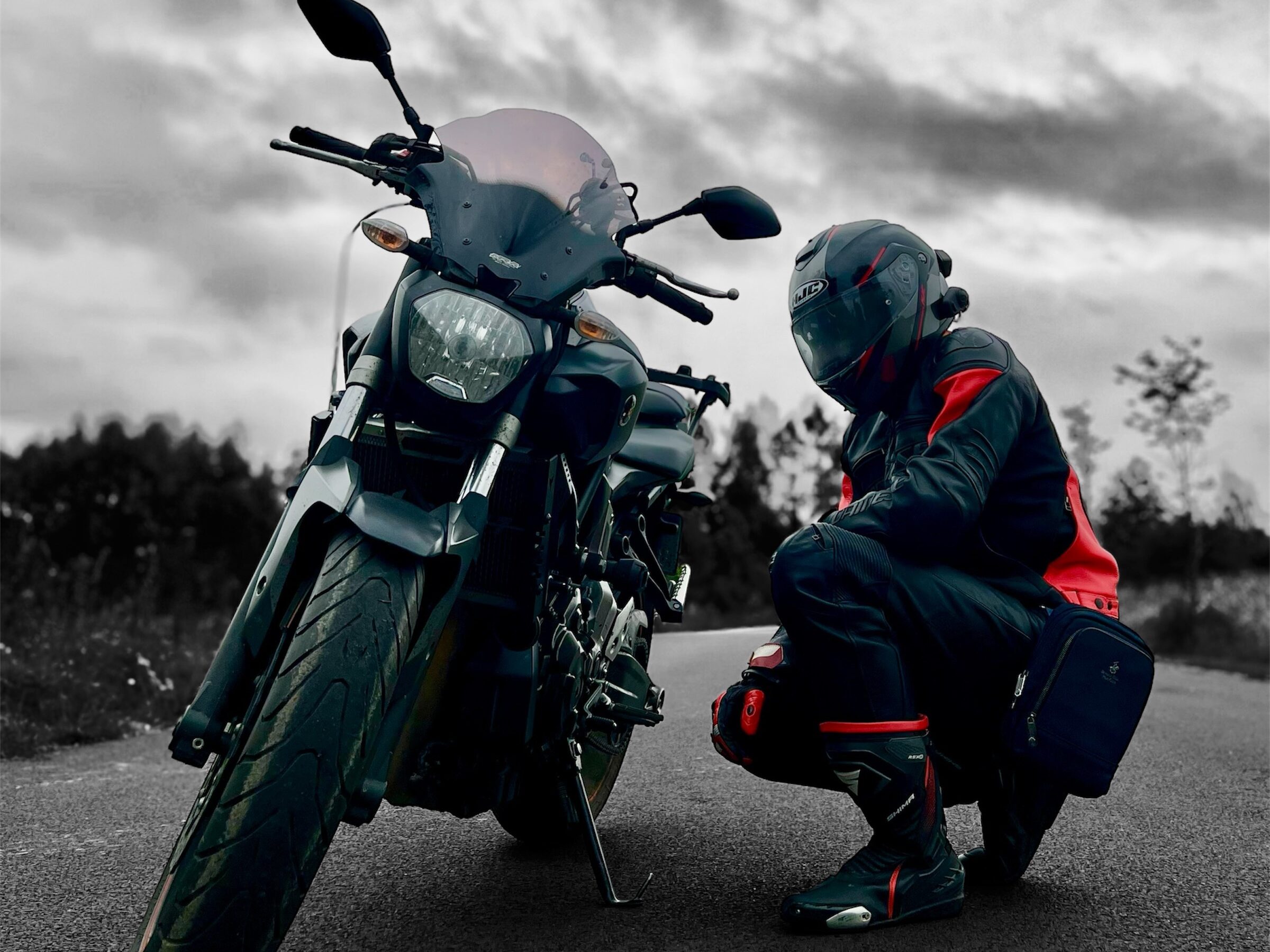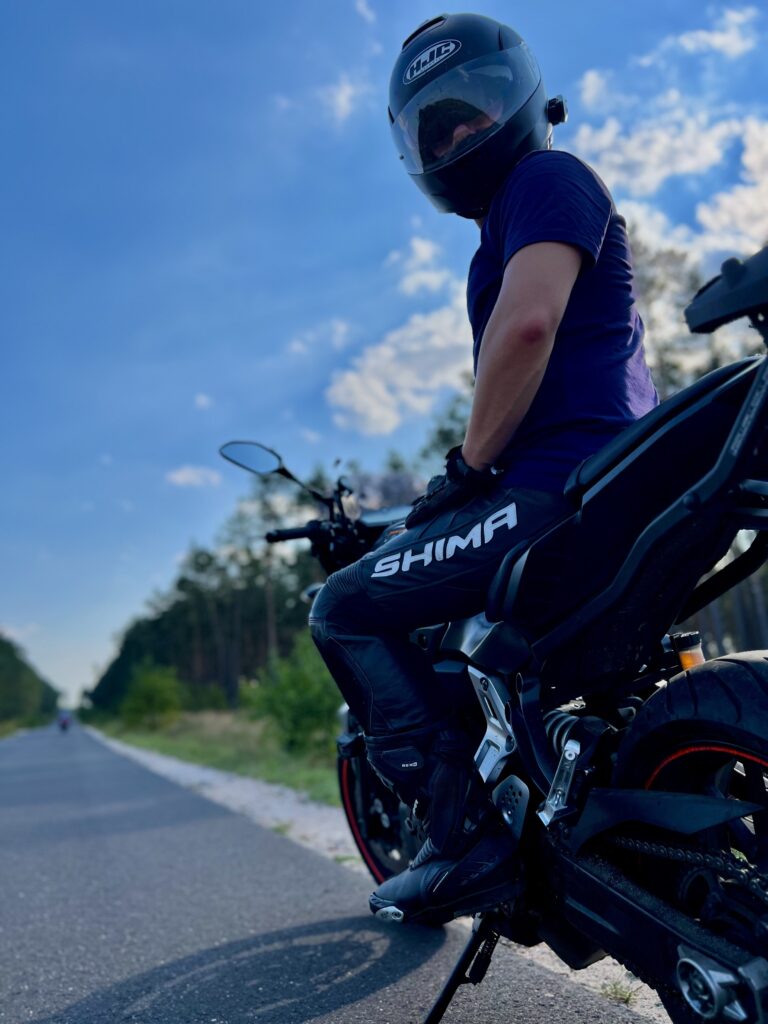Riding a motorcycle isn’t just about twisting the throttle and hitting the road – it’s about skill, precision, and control. Whether you’re a beginner or a seasoned rider, refining your riding techniques can make all the difference in safety, confidence, and overall enjoyment. So, what are the essential riding skills every motorcyclist should master?
Cornering with confidence
Taking a curve isn’t just about leaning into it – it’s about understanding body positioning, throttle control, and the right line through the turn. Look where you want to go, keep a steady throttle, and trust your bike. The better your cornering technique, the smoother and safer your ride will be.
Cornering is one of the most exhilarating aspects of riding a motorcycle. A well-executed turn feels effortless, like a perfect dance between rider and machine. However, it’s also one of the most challenging skills to master, requiring a combination of technique, awareness, and confidence. Whether you’re carving through twisty mountain roads or navigating urban intersections, understanding the fundamentals of cornering will make your ride smoother, safer, and more enjoyable.
1. Vision: Look Where You Want to Go
Your bike will naturally follow your eyes. If you focus on the inside of the turn, that’s where your bike will go. Many new riders make the mistake of fixating on the road directly in front of them or, worse, on an obstacle they want to avoid. Instead, practice looking through the turn—your head should be turned in the direction you want to go, scanning ahead to anticipate what’s coming next.
2. Body Positioning: Stay Aligned with the Bike
Your body position plays a crucial role in maintaining stability and control. There are different cornering techniques, but a general rule is to keep your upper body relaxed and aligned with the bike’s lean. More aggressive cornering, like on sportbikes, may involve shifting your body slightly to the inside of the turn, while on cruisers, a more upright stance is preferred. The key is to stay loose, grip the tank with your knees for stability, and avoid stiffening your arms.
3. Throttle Control: Smooth Inputs Make Smooth Turns
One of the most important aspects of cornering is throttle control. A common mistake is rolling off the throttle too much mid-turn, which can cause instability. Instead, maintain a steady throttle or apply slight acceleration as you exit the turn. This keeps the suspension balanced and prevents the bike from becoming unsettled.
4. Braking: Slow in, Smooth Out
Braking should mostly be done before entering the turn. Hard braking while leaning can lead to loss of traction, so it’s best to reduce speed before initiating the lean. If you do need to slow down mid-turn, do so gently using the rear brake to avoid unsettling the bike. The golden rule? Slow in, smooth out.
5. Choosing the Right Line: The Perfect Path Through the Curve
Every turn has an ideal line that allows for the smoothest and safest passage. The standard approach is the outside-inside-outside technique:
- Outside: Start wide to give yourself the best view of the road ahead.
- Inside: Lean into the turn, hitting the apex (the tightest point of the turn).
- Outside: Let the bike naturally straighten as you exit the corner.
This technique maximizes visibility, stability, and control, making for a safer and more enjoyable ride.
6. Traction and Road Conditions: Know Your Limits
Traction is everything in cornering. Factors like road surface, weather conditions, and tire quality all play a role. Wet roads, gravel, or uneven pavement can reduce grip, so always adjust your lean angle and speed accordingly. Trust your tires, but don’t push beyond their limits—especially on unfamiliar roads.
7. Confidence Through Practice
Like any skill, mastering cornering takes practice. Find a safe place, such as an empty parking lot, and work on slow-speed turns, leaning techniques, and throttle control. Gradually build your confidence before taking on more challenging roads.
Braking like a pro
Braking is one of the most essential motorcycle skills, yet many riders never fully develop the technique needed to stop smoothly, efficiently, and – most importantly – safely. Whether you’re navigating city traffic, approaching a tight turn, or dealing with an unexpected obstacle, knowing how to brake properly can mean the difference between a controlled stop and a dangerous situation. Let’s break down the key aspects of expert-level braking.

1. Understanding Your Brakes: Front vs. Rear
Motorcycles have two independent braking systems:
- Front brake – Handles about 70-90% of your stopping power, depending on road conditions and bike weight distribution.
- Rear brake – Provides stability and control, especially at lower speeds or on slippery surfaces.
Many new riders hesitate to use the front brake aggressively, fearing a front-wheel lockup, but modern braking systems (especially ABS-equipped bikes) allow for strong front braking without losing control. Learning to trust and properly modulate your front brake is key to effective stopping.
2. The Right Technique: Progressive Braking
One of the biggest mistakes riders make is grabbing the brakes suddenly, which can cause skidding or loss of control. Instead, use progressive braking:
- Step 1: Light Initial Input – Gently apply pressure to the front and rear brakes to settle the suspension.
- Step 2: Increase Pressure Smoothly – Gradually squeeze the front brake lever more firmly while maintaining rear brake pressure.
- Step 3: Ease Off Smoothly – As you come to a stop, gradually release the brakes to avoid unsettling the bike.
This method ensures a controlled stop while keeping the bike stable and preventing abrupt weight shifts that could lead to loss of traction.
3. Emergency Braking: Stopping Fast Without Losing Control
In a panic situation, your ability to brake effectively could save your life. Here’s how to perform emergency braking like a pro:
- Keep your body relaxed and stay centered over the bike.
- Apply both brakes progressively but firmly – don’t grab the front brake suddenly.
- If your bike has ABS, trust it! Keep braking hard and let the system prevent wheel lock-up.
- If your bike doesn’t have ABS, modulate the front brake carefully to avoid locking the wheel. If you feel a skid, ease off slightly and reapply.
Regular practice of emergency stops in a controlled environment will build muscle memory and confidence, so you’re ready when it matters.
4. Braking in Corners: The Right Approach
Braking while leaned into a turn is tricky because your tires already have limited traction available. Ideally, you should slow down before entering the turn and maintain smooth throttle control through the curve. However, if you do need to brake mid-corner:
- Use gentle rear brake pressure to scrub speed without upsetting balance.
- If you must use the front brake, apply it lightly and progressively to avoid breaking traction.
- For bikes with cornering ABS, let the system help you maintain stability.
5. Braking on Different Surfaces: Adjusting for Conditions
Road conditions significantly affect braking performance. Here’s how to adapt:
- Wet roads – Reduce brake pressure and increase following distance to avoid hydroplaning.
- Gravel/sand – Use mostly rear brake to prevent front-wheel washout.
- Downhill braking – Apply more front brake while keeping some throttle to stabilize the bike.
Understanding how your bike reacts on various surfaces will make you a more adaptable and skilled rider.
6. The Key to Mastery: Practice, Practice, Practice
Even experienced riders benefit from regularly practicing their braking skills. Try these drills in a safe area:
✅ Emergency stops – Start at low speeds and gradually increase.
✅ Threshold braking – Find the point just before the wheels lock and practice maintaining that pressure.
✅ Low-speed braking – Use your rear brake to control slow maneuvers in parking lots or tight spaces.
Braking isn’t just about stopping—it’s about control. A rider who masters braking rides with more confidence, better safety, and improved overall handling. So, the next time you head out for a ride, take a few moments to focus on your braking technique. It’s a skill that could make all the difference.
Balancing slow-speed maneuvers

Balancing slow-speed maneuvers is one of the most crucial skills every rider must master. At low speeds, your bike is less stable, and maintaining control requires precise body positioning, clutch, throttle, and brake control. A skilled rider doesn’t just know how to handle a bike at high speeds; they also know how to navigate tight spaces, make U-turns, and weave through obstacles with grace.
One of the most important aspects of slow-speed riding is your body position and where you look. At low speeds, your bike becomes more prone to tipping, so keeping your body relaxed but stable is key. Lightly gripping the handlebars with your knees pressed against the tank helps maintain balance. Also, always look where you want to go – your bike will follow your eyes, so focus on your path ahead instead of the ground or the obstacles around you.
Another key component is the friction zone – the point where the clutch is partially engaged, allowing you to control the bike’s movement without fully disengaging the power. Mastering this friction zone allows you to ride at a walking pace, gradually building confidence and precision.
When combined with smooth throttle control and light rear brake pressure, you’ll find yourself maintaining better balance at low speeds. The rear brake helps you maintain stability, preventing sudden shifts in weight that could cause you to lose control. By lightly dragging the rear brake while modulating the throttle, you can ensure that your bike stays steady as you move.
Slow-speed maneuvering also involves mastering turns, particularly tight U-turns. The key to a smooth turn is to look through it and keep your eyes focused on your exit point. Use the friction zone to control power smoothly and apply the rear brake lightly for extra stability. Shifting your weight slightly to the outside of the turn helps you maintain balance, making it easier to navigate sharp corners at slow speeds.
A great way to practice these skills is to set up a slalom course using cones or markers. Weaving between obstacles forces you to develop fine control over your bike, and with regular practice, you’ll begin to handle slow-speed scenarios with ease. The same applies to stop-and-go traffic. By maintaining steady throttle and practicing keeping one foot up, you’ll find yourself more comfortable in situations where constant starting and stopping are required.
Overall, slow-speed maneuvers are essential for safe, confident riding. The ability to ride smoothly at low speeds can make a huge difference in everyday riding situations, from parking to maneuvering through traffic. By dedicating time to practicing these techniques, you’ll not only become more skilled but also gain a deeper sense of control over your motorcycle, enhancing both your safety and enjoyment on the road.
Unlock Your Potential: Master Riding Skills and Techniques
Mastering the skills and techniques covered here is not just about becoming a better rider—it’s about gaining confidence, control, and enjoyment on every ride. Whether you’re perfecting your cornering, braking, or slow-speed maneuvers, every improvement helps you ride more safely and with greater satisfaction. Remember, practice is key, and the more time you spend honing these techniques, the more intuitive and enjoyable riding will become. So get out there, keep pushing your limits, and ride with confidence!